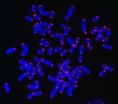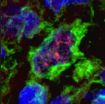(Press-News.org) New guidelines for CT-guided biopsies of lung nodules significantly reduce radiation exposure allowing individuals the benefit of the procedure, which may cut down on overall lung cancer deaths. This research is being presented at the Society of Interventional Radiology's 37th Annual Scientific Meeting in San Francisco, Calif.
"The published early results of a trial using computed tomography to detect lung nodules demonstrated that screening with low-dose CT reduced mortality from lung cancer by 20 percent compared to screening with chest X-rays alone," said Jeremy Collins, M.D., assistant professor of radiology at Northwestern University in Chicago, Ill. "Statistically, many people who undergo screening will have nodules detected with CT and a biopsy may be recommended. We want to minimize the side effects of the biopsy procedure," he added.
The medical community evaluates the risks of radiation exposure on patients. While there is debate about the actual risk of cumulative exposure from the types of medical imaging that emit radiation, interventional radiologists are trying to curb patient dose. CT has been gaining recognition as the most effective imaging technique for lung nodules since it is more sensitive than chest X-rays and all other imaging tests.
"Lung nodules are clearly imaged using CT because of the high contrast between normal air-containing lung tissue and higher-density lung nodules. CT technologies have come a long way in offering new tools that reduce the per-procedure radiation dose," said Collins.
This research focuses on a new set of CT imaging parameters to further reduce radiation exposure while maintaining image quality. The new protocol downshifts the amount of energy the CT scanner uses to produce images and moderates the current of the X-ray tube to put out a smaller dose during examination.
"All image studies using X-ray technology are going to be associated with a small amount of finite radiation exposure," said Collins. "Although the jury is still out to some degree, there is general consensus in the community that the radiation dose risk is both linear and additive. Any place where we can reduce the incremental dose for each imaging study is very important because the overall exposure over time can be substantial," he noted.
For this study, researchers implemented the new CT imaging protocol for lung-nodule biopsy and then reviewed data from 100 people, half of whom underwent CT-guided biopsies prior to the new protocol and half after the protocol went into effect.
The low dose protocol led to a dramatic 66 percent drop in radiation dose, and image quality was maintained for all of the CT-guided biopsies.
"We found that simple modifications to the CT technique used for guidance to perform lung biopsies resulted in a significant dose reduction to individuals treated," noted Collins. "This was possible while maintaining appropriate image quality for interventional radiologists performing biopsy, and fortunately the modification to the scanner technique is simple and can be applied to any existing CT scanner system," he added.
"The new protocol can be adopted immediately to reduce exposure, but interventional radiologists will still need to evaluate each person on a case-by-case basis, especially smaller people or those who have anatomy that is more difficult to image. The dose can be reduced even further for children, but more studies need to be done to tailor the protocol," says Collins.
###
Interventional radiologists are highly trained in radiation safety and continue to provide new data and education related to radiation physics and how radiation affects the body. The Society of Interventional Radiology is dedicated to the safety of patients as well as health care professionals and promotes minimally invasive procedures and techniques that reduce overall radiation exposure. As an organization at the forefront of radiation safety, the Society of Interventional Radiology presents the newest research for the assessment of radiation dosage, provides education to the medical community and the public about radiation protection and dose reduction, and encourages communication between doctors and their patients.
More information about the Society of Interventional Radiology, interventional radiologists and minimally invasive treatments can be found online at www.SIRweb.org.
Abstract 62: "Implementation of a Low-dose Protocol for CT-guided Lung Biopsy Procedures," J.D. Collins, P. Entezari, R.J. Lewandowski, V. Yaghmai, A. Nemcek, J.C. Carr, radiology, Northwestern University, Chicago, Ill., SIR 37th Annual Scientific Meeting, March 24-29, 2012. This abstract can be found online at www.JVIR.org.
About the Society of Interventional Radiology
Interventional radiologists are physicians who specialize in minimally invasive, targeted treatments. They offer the most in-depth knowledge of the least invasive treatments available coupled with diagnostic and clinical experience across all specialties. They use X-ray, MRI and other imaging to advance a catheter in the body, such as in an artery, to treat at the source of the disease internally. As the inventors of angioplasty and the catheter-delivered stent, which were first used in the legs to treat peripheral arterial disease, interventional radiologists pioneered minimally invasive modern medicine. Today, interventional oncology is a growing specialty area of interventional radiology. Interventional radiologists can deliver treatments for cancer directly to the tumor without significant side effects or damage to nearby normal tissue. Many conditions that once required surgery can be treated less invasively by interventional radiologists. Interventional radiology treatments offer less risk, less pain and less recovery time compared to open surgery. Visit www.SIRweb.org.
The Society of Interventional Radiology is holding its 37th Annual Scientific Meeting March 24-29 at Moscone Center, San Francisco, Calif. The theme of the meeting is "IR Evidence," chosen to reflect interventional radiology's gathering, presenting and discussing results of care-changing investigations.
END
A burst aneurysm (a local area of bulge) in the abdominal aorta—the largest blood vessel in the body— is a deadly condition. In fact, about half of these patients don't make it to the hospital in time. Those who do more often than not face open surgery to repair the blood vessel. This study finds that a minimally invasive interventional radiology treatment for ruptured aneurysms called endovascular aneurysm repair (EVAR) is safer than open surgical repair and is associated with lower mortality rates, say researchers Society of Interventional Radiology's 37th Annual Scientific ...
KANSAS CITY, MO—Few molecules are more interesting than DNA—except of course RNA. After two decades of research, that "other macromolecule" is no longer considered a mere messenger between glamorous DNA and protein-synthesizing machines. We now know that RNA has been leading a secret life, regulating gene expression and partnering with proteins to form catalytic ribonucleoprotein (RNP) complexes.
One of those RNPs is telomerase, an enzyme that maintains chromosome integrity. In the March 25, 2012, advance online edition of Nature, researchers at the Stowers Institute ...
A genetic finding could help explain why influenza becomes a life-threating disease to some people while it has only mild effects in others. New research led by the Wellcome Trust Sanger Institute has identified for the first time a human gene that influences how we respond to influenza infection.
People who carry a particular variant of a gene called IFITM3 are significantly more likely to be hospitalised when they fall ill with influenza than those who carry other variants, the team found. This gene plays a critical role in protecting the body against infection with ...
The ripeness of fruit could determine how food-poisoning bacteria grow on them, according to scientists presenting their work at the Society for General Microbiology's Spring Conference in Dublin this week. Their work could lead to new strategies to improve food safety, bringing many health and economic benefits.
A wide range of fresh produce has been linked to outbreaks of Escherichia coli and Salmonella enterica including melons, jalapeño and serrano peppers, basil, lettuce, horseradish sprouts and tomatoes. Researchers at Imperial College London are looking at how ...
Henderson Properties, a full service real estate company, last week, celebrated the opening of its Union County office in Indian Trail with a ribbon cutting and business networking event in conjunction with the Union County Chamber. The office, located at 4389 Indian Trail-Fairview Road, is the company's fourth branch location. Henderson Properties also has offices in South Charlotte, Lake Norman and Fort Mill.
The new office allows Henderson Properties real estate agents to better serve Union County residents.
In attendance was Kara Disotell, manager of Henderson ...
Wall Templeton & Haldrup, P. A. (www.WallTempleton.com), is pleased to announce Tommy Boger has joined the firm's Charleston office as an associate attorney. A graduate of Clemson University and the Charleston School of Law, Boger will focus his practice in the areas of complex litigation, construction, and commercial litigation.
Prior to attending law school, Boger worked in the mortgage industry as an online marketing manager and a loan consultant, originating residential mortgage loans in Columbia and Charleston, SC. He is a member of the South Carolina Bar and ...
Oral bacteria that escape into the bloodstream are able to cause blood clots and trigger life-threatening endocarditis. Further research could lead to new drugs to tackle infective heart disease, say scientists presenting their work at the Society for General Microbiology's Spring Conference in Dublin this week.
Streptococcus gordonii is a normal inhabitant of the mouth and contributes to plaque that forms on the surface of teeth. If these bacteria enter into the blood stream through bleeding gums they can start to wreak havoc by masquerading as human proteins.
Researchers ...
Viruses that can target and destroy bacteria have the potential to be an effective strategy for tackling hard-to-treat bacterial infections. The development of such novel therapies is being accelerated in response to growing antibiotic resistance, says Dr David Harper at the Society for General Microbiology's Spring Conference in Dublin.
Bacteriophages are viruses that can infect bacteria and multiply within them, breaking down the cell and destroying the bacteria - amplifying themselves in the process to deal with more bacteria. They are found everywhere including in ...
In a report published in recent weeks, Technology Evaluation Centers (TEC) announced that The Answer Company is the newest recipient of its Accreditation for Enterprise Resource Planning (ERP) Providers. The Answer Company, with offices in Vancouver, Calgary and Toronto, is the first ERP reseller in Western Canada to receive the rigorous TEC Accreditation, demonstrating its commitment to show prospective and existing clientele that users of the company's solutions are confident in the abilities and services.
Recent emphasis on the high failure rate of software implementations, ...
UCLA researchers pinpointed a new mechanism that potently activates T-cells, the group of white blood cells that play a major role in fighting infections.
Published March 25 online in Nature Medicine, the team specifically studied how dendritic cells, immune cells located at the site of infection, become more specialized to fight the leprosy pathogen known as Mycobacterium leprae. Dendritic cells, like scouts in the field of a military operation, deliver key information about an invading pathogen that helps activate the T-cells in launching a more effective attack.
It ...


